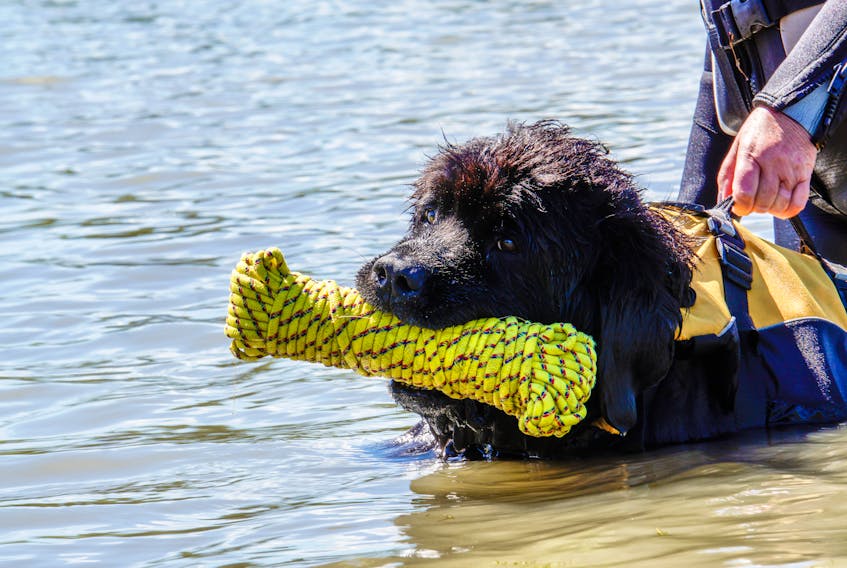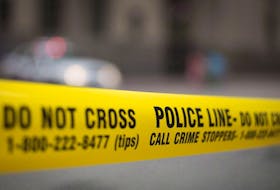The Newfoundland dog is a special breed.
It has long been a symbol of Newfoundland and Labrador and famed for its bravery, gentle temperament and powerful swimming abilities often utilized in the rescue of someone in trouble in the water.
In fact, a Newfoundland dog named Sable Chief helped comfort members of the Royal Newfoundland Regiment in 1917 — a gift from a Canadian officer to help lift the spirits of the regiment still devastated from terrible losses suffered a year earlier at the Battle of Beaumont Hamel, and subsequent other battles.
Sir John Franklin had a Newfoundland dog named Neptune on his ship during his ill-fated expedition to find the Northwest Passage in 1845. The dog was presented to the ship and crew by Franklin’s wife as a means to bring comfort during the long, arduous voyage.
Newfoundland dogs are well-loved in Newfoundland and Labrador and by dog enthusiasts all over the world.
In the United Kingdom, a group of dog owners is taking extra steps to preserve the special skills of the Newfoundland.
The Rother Valley Newfoundland Training Group was formed in 1990 by a small group of Newfoundland dog enthusiasts. The aim of the group is to preserve the water life-saving and draught instincts of the breed so their working abilities can be maintained for the enjoyment of both the dogs and the owners.
Twenty-eight years later the group is going stronger than ever, and members are often asked to put off public demonstrations and raise money for charities.
“A working sub-committee was formed within the umbrella of the Northern Newfoundland Club and members of the club, together with representatives from the Newfoundland Club of Great Britain, developed a set of water and draught test regulations in order that the training could follow a consistent standard by any group throughout the country,” group member Vin Whiting said in an email message.
“The water tests allowed for a progression from basic obedience and simple retrieval tasks with the owner to advanced search and rescue of strangers.”
The training and testing of the dogs usually takes place in Rother Valley Country Park in Rotherham, South Yorkshire.
Whiting said the tests include the Newfoundland dogs taking a life ring to a person in the water, retrieving objects from above and below the water, towing a boat to shore, and finding a person hidden from view behind a boat.
“The dog has to pass each level of the test before moving on to the next, higher level,” he said. “The draught tests follow a similar pattern starting with obedience on the lead and pulling a log in a straight line to maneuvering a cart around obstacles, with the weight in the cart and distance gradually increasing with each level.
“Both tests were reviewed every three years to ensure they remained relevant and achievable, but the main elements have remained in almost their original form over the years.”
Whiting said that as numbers and interest grew, working groups were established around the United Kingdom, providing the opportunity for dogs and owners to carry out training and tests in several venues.
He said the owners are always proud to show off their dogs’ abilities to the public, and the dogs never disappoint.
“The water displays make use of the dogs’ training but in a format that provides an interesting spectacle for the public to watch for about an hour,” Whiting said. “The display ends with up to 20 members of the group being pulled back to shore in a straight line by a single dog. The public is then invited to have a ride in a boat pulled by one of the dogs.
“For land work the dogs show their ability to pull carts around a series of obstacles and reverse them into tight spaces. The carts are sometimes decorated with flowers, and small children are given rides in the carts pulled by the Newfoundlands.”
Money raised by the group has helped build a children's hospice, and gone toward charities supporting children in need, as well as armed services charities.
Whiting said the Newfoundland is an amazing animal, one its namesake province should be proud of.









